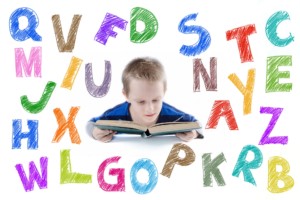Over 60 percent of parents polled said they were not familiar with the common warning signs. Over half the parents were not aware the importance of early detection. Preferably, before the age of 4. If not the treatment can take longer, be more complex, and cost more.
3-4 years
 During this period, children are combining more words together to form 4+ word phrases and sentences when they are talking. They are also able to recall and talk about events that happen outside the home (i.e. at daycare).
During this period, children are combining more words together to form 4+ word phrases and sentences when they are talking. They are also able to recall and talk about events that happen outside the home (i.e. at daycare).
Your child’s speech is also clear at this time and should be understood the majority of the time by both familiar and unfamiliar listeners.
More complex grammar rules are also developing at this time, for example pronouns, past tense verbs, and prepositions.
Children this age are also developing their knowledge and use of basic concepts (i.e. spatial, qualitative) during this period.
4-5 years
By the 4-5 your old range, children are using clear sentences that are easy to listen to and understand.
Your child is able to provide more details within their stories and sentences and are able to understand, as well as ask, more complex questions.
 The majority of your child’s sounds are produced correctly by this age, with the possible exception of later developing sounds, such as “r” and “th”.
The majority of your child’s sounds are produced correctly by this age, with the possible exception of later developing sounds, such as “r” and “th”.
At this age, children are readily engaging in conversation with their family, as well as their peers.
They have mastered and are appropriately using the grammar rules of their native language by the end of the 4-5 year developmental stage.
They are also mastering their understanding and use of basic concepts, such as quantity and spatial concepts
Empowering you and your child
A speech therapist from First Words Speech Therapy will equip parents and caregivers with the knowledge and tools to help your child. Creating a team that can change your child’s life, by giving them the ability to learn, communicate, and socialize.
Setting up your child for success, is the most powerful thing a parent can do. ASHA offers parents essential information on children’s communication and development from birth to and 5.


